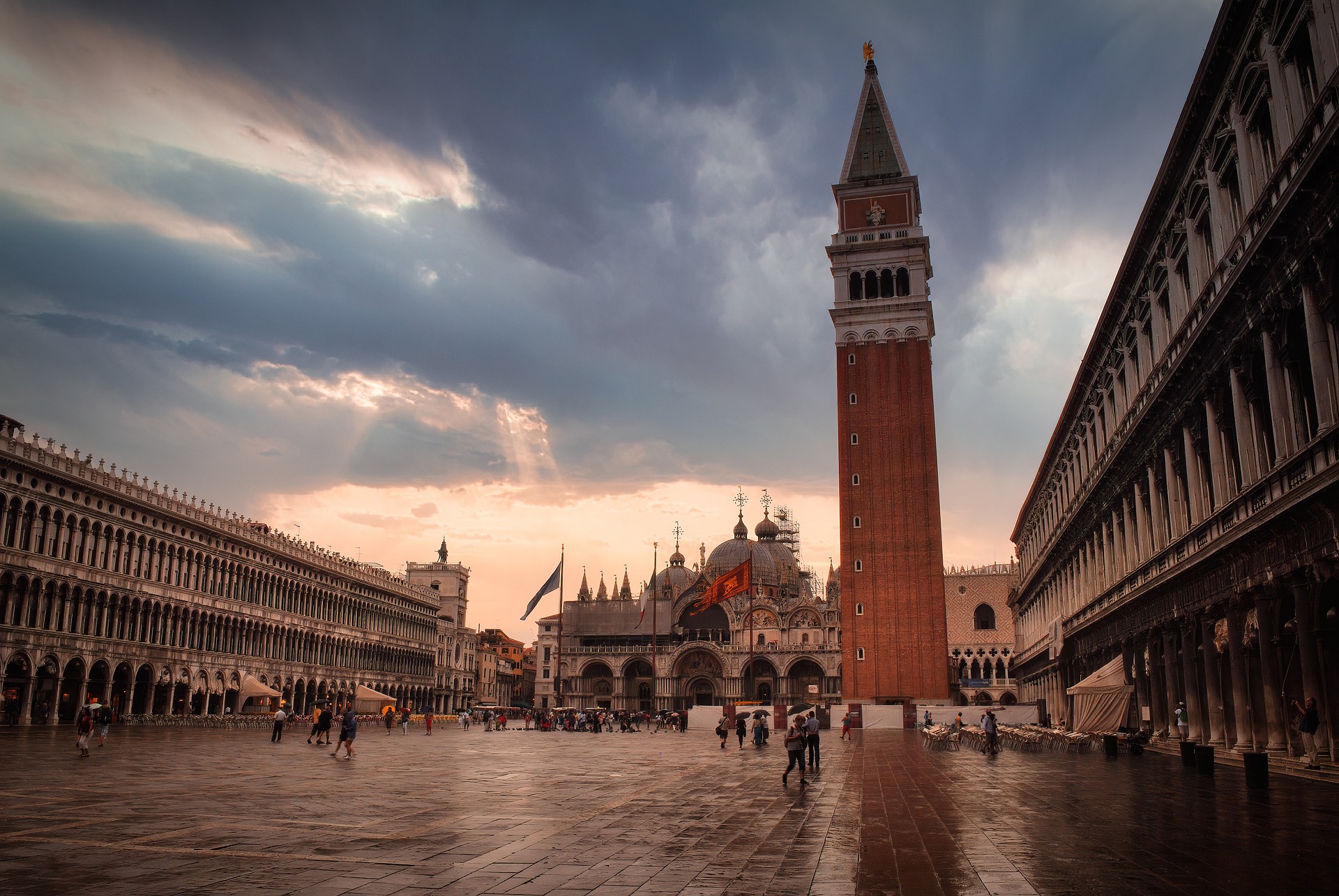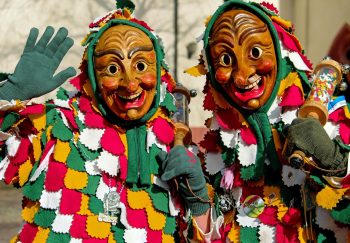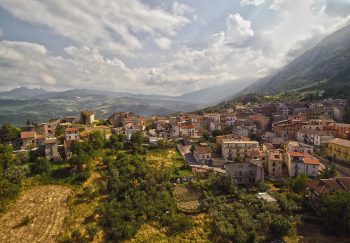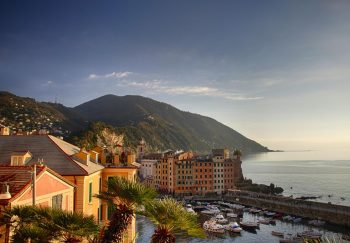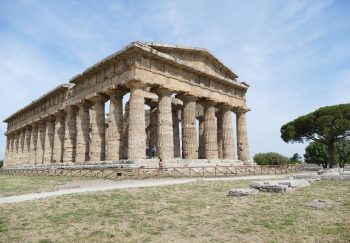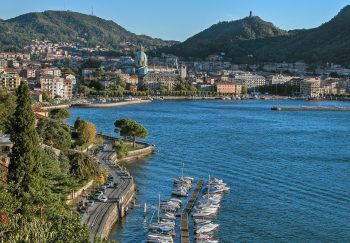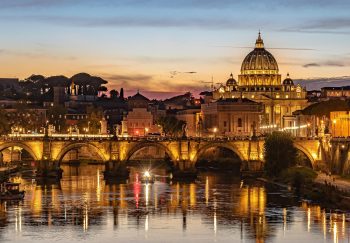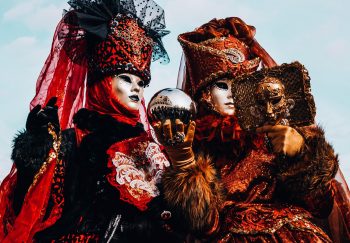The Ancient Origins of the Italian Piazza
According to legend, the ancient Roman practice that built roads in a grid system led to the creation of Italian piazzas. The intersection of the main roads was prime real property. It almost always had a temple. This would later become the center point of what became a piazza. As Christianity spread, temples were replaced with churches in the 4th and 5th centuries. Meanwhile, government buildings, markets and shops grew around the edges. The power of Imperial Rome dwindled towards the ladder period of the 5th century. As a result, towns built fortresses to defend themselves from attack and the piazza was made a safe haven within a fortified city. Piazzas in Italy were praised during the Renaissance and heavily decorated with Baroque embellishments in the 17th Century.
Piazzas in Italy have been witness to many battles, hangings, and duels throughout history. There have been many weddings, baptisms and festivals held in their piazzas. The Italian piazza, which is a central feature of Italian daily life, is just as popular as ever. These are some of the most famous and less well-known Italian piazzas.
1. Piazza dell’Unita d’Italia, Trieste
This square is also known by the names Piazza dell’Unita and Piazza Grande. It is located in central Trieste, and boasts one of the most unusual locations in the country. The piazza’s rectangular shape, which opens directly to the ocean, pays homage to Trieste’s maritime history. It is the only Italian piazza that faces the sea. It also houses many of Trieste’s most beautiful attractions, such as the Palazzo Comunale and the Four Continents fountain, along with other important political buildings. The piazza’s position on the Italy’s northeastern frontier gives it a distinct Austrian flair with architecture that is directly from the city’s Austro-Hungarian era.
2. Piazza San Marco, Venice
At the end of Middle Ages, the Venetian Republic was in power. The impressive Piazza Santa Marco grew with it and became one of the most iconic squares in the world. It is known as the “drawing room” of Europe and is dominated by the Byzantine architecture at St Mark’s Basilica with its massive bell tower. This square is unique because of its unique environment and atmosphere – it’s right by the Venetian lagoon! Piazza San Marco is the only authentic piazza in Venice. All other squares have a different name. It attracts thousands of tourists and residents every day. Stop by Harry’s Bar for a Negroni or a better bellini. This swanky bar has been home to the likes Ernest Hemingway and Charlie Chaplin, Truman Capote (Ali Haitchcock), Orson Welles, and many others. Although it is expensive and touristy, it can be difficult to get a spot. But it is definitely worth it.
3. Piazza della Signoria, Florence
Each piazza served a different purpose in medieval cities. One was the city’s political centre, one was its religious base and the third was the heart of the economy. Florence’s Piazza della Signoria served as the political centre of the entire Italian Renaissance. It houses the enormous Palazzo Vecchio, the seat of power for the Medicis – a banking family who were patrons to many of the Renaissance’s greatest minds, including Leonardo, Vasari and Brunelleschi. It is a strikingly designed and large public space that best represents the vision and power of one family and their political project. It’s impossible to not feel awed by the power and ambition of the Medici Dynasty while standing within it. The Loggia dei Linzi is another amazing public sculpture gallery. It features a reproduction of Michelangelo’s David in its original place, a bronze by Benvenuto cellini and an ancient lion statue whose origins remain a mystery.
4. Piazza del Campo, Siena
Piazza del Campo was created during the period when there were numerous invasions and subsequent fortifications of towns. This occurred after the fall of the Roman Empire in 5th century. This piazza is surrounded by houses that face each other – likely as a safety measure similar to circling the wagons. Its unique fan shape is what gives it its beauty. The race that gave it its fame is what gives it its popularity. In the plaza, there is the Palio horse race twice a year. Horses from different neighborhoods of Siena race along a specially prepared track that runs around the outside of the piazza. It is little more than sand packed on top of stones. It is one of the most thrilling and nerve-wracking cultural events in Italy to watch horses race through a piazza. It’s not difficult to obtain tickets. However, it can be difficult to find good tickets. The ones that are available to non-Sienese will be in the standing room-only section at the center of the piazza. The piazza is almost hidden in the middle of the picturesque hill town on a typical day. The piazza is crowded with tourists taking photos and students sat on the steep slopes listening to music and drinking. You can take a stunning view of the piazza’s shell-shaped, organic shape from the Torre del Mangia to get a real treat.
5. Piazza dei Miracoli, Pisa
Piazza dei Miracoli, probably the most traditional piazza in Italy, is on this list. The large piazza, which is partly paved and partially covered with grass, is also walled in, almost like a private backyard. It is home to Pisa’s cathedral, battistero or baptismistery, “Monumental Cemetery”, as well as a certain crooked Tower that you may have heard about. It took 177 years for the Leaning Tower of Pisa to be completed. However, after only five years of construction, the subsoil started to sink and the tower began to lean. Amazingly, this was not considered a serious enough issue to stop construction. Engineers added top levels to compensate for the soil’s lean. One side was slightly higher than the other. Since 1987, the Piazza has been a UNESCO Cultural Heritage Site. It has been a popular tourist destination for many centuries. Today, most tourists will be standing at a specific point in front of Piazza to get the “I’m propped up the Leaning Tower of Pisa” shot. This photo op, although novelty photos are not encouraged in moderation is admittedly pretty good.
6. Prato della Valle, Padua
Prato della Valle, also known as Padova or Padua in English, is a town square measuring 90,000. It’s actually an elliptical, not a square. It is also the largest square (er, elliptical) in Italy. The central piazza is a pride of the Paduans. It is called Il Prato in Italian, which means “yard”, and it refers to all the lush greenery. Take a moment to take in at least one of the 78 statues when you visit. Each statue represents a Paduan figure, such as the Roman historian Livy or the astronomer Galileo Galilei. People can be seen walking, biking or skating around the square during the day while others sunbathe or picnic. Teenagers have fun flirting and adults go for a stroll before dinner. On Saturday mornings, a huge market fills most of the Piazza. This is one of the best times of the week to visit.
7. Piazza Ducale, Vigevano
Ludovico, a 15th century Duke of Milan, created the Piazza Ducale to make his palace more impressive. Old Ludovica was one of the most important rulers of the Italian Renaissance. He also displayed a lot of flair. His court was full of musicians and artists, and he was a patron to Bramante as well as Leonardo Da Vinci. It took only two years to complete his square, which was built in 1492. It looks larger than it is due to the homogeneous buildings surrounding it on three sides. The rectangular piazza feels more like an entryway than an outdoor space because of its size. On the fourth side, the Duomo dominates. It is home to the astonishing “treasury”, which is actually the private collection of tapestries and relics of Francesco II Sforza. It is definitely worth a visit. This beautiful piazza in Italy is just 30 minutes away from Milan. It offers a wonderful view of Renaissance architecture and the potential for what a single Duke could accomplish.
8. Piazza Maggiore & Piazza del Nettuno, Bologna
Although technically they are two different piazzas in Bologna, Piazza Maggiore (Bologna) and Piazza del Nettuno (Bologna), they are connected and far too beautiful to pick between. Piazza Maggiore, located in the heart the city, is the ideal starting point for exploring Bologna. It is huge and very well-maintained. The classic Fountain of Neptune (16th century) can be seen in the northwest corner of Piazza del Nettuno. Four rivers flow from his feet, representing the four continents at the time it was created: the Ganges (Nile), Danube, Danube, and Amazon. Although the surrounding piazza may be small, its striking statue is quite powerful. Pay particular attention to Neptune’s trident. Do you recognize it? Maserati, a sports car manufacturer, based its logo on it.
9. Piazza del Popolo, Ascoli Piceno
Ascoli Piceno, a small town in Le Marche, is located close to most tourist routes and is home to one of the most striking and elegant piazzas in the region. Piazza del Popolo, or Square of the People is the central square. It is known for its Renaissance-inspired design and the warmth of its travertine pavers. Travertine, a limestone type found in the nearby mountains, is used in many other architectural masterpieces in Italy. Keep an eye out for towers that line the skyline of the city when you’re there. There were 200 towers in the middle ages. There are now only 50.
10. Piazza San Pietro in Vatican City
St Peter’s Basilica doesn’t need much introduction. However, many people are so focused on getting inside that they neglect the feature that is both the epicenter for global catholicism as well as the crown jewel of baroque architecture, the majestic Piazza St. Pietro. Gian Lorenzo Bernini, a great architect and artist, added the colonnade that extends from the Basilica to embrace the faithful. This design is what Robert Hughes, an art historian, has described as the “greatest gesture of anthropomorphism in architecture history”. It boasts a stunning 248 Tuscan column as well as 140 statues of saints. Tens of thousands of people can fit in the plaza to be blessed and greeted by the Pope on special occasions. To describe such spaces, words like “awe-inspiring”, and “monumental” were invented. Piazza San Pietro is the only Italian piazza to drop your jaw so quickly and completely.
You can find more information about Rome’s greatest sculptor at our blog. We also have a list of his most notable works.
11. Piazza Navona, Rome
Piazza NAVONA is Rome’s most loved and lively square. Although the plaza’s oval shape is the only remembrance of its Roman origins as a chariot track, it continues to be a popular destination for locals and tourists. The piazza’s most distinctive architecture and monuments date back to the 17th century, when Pope Innocent X built a family palace there and commissioned fountains to beautify it. The Fountain of the Four Rivers is the main attraction of this Italian piazza. Bernini created this Baroque masterpiece. It was actually a return to form after he was out of favor with Pope Francis. It’s so full of movement, wonder, wonder, drama, and whimsy that it can be difficult to see where to look. The most striking thing, but often overlooked, is that the Egyptian obelisk, which crowns the fountain, is suspended above the air. This feat should not be possible given the heavy-weight of the solid-stone slab obelisk. Everybody thought that the design would fall as soon as it was constructed. It’s amazing what they knew. Enjoy street vendors, jugglers and artists on this piazza.
12. Piazza del Plebiscito, Naples
The strange name of this Piazza has a fascinating background. Its English name is “plebiscite”, more commonly known as a vote. It was the vote that brought Naples to the unified Kingdom in Italy in 1860. Previously, it had been a separate kingdom. Piazza, a beautiful square, dates back to the early 19th century. It is located close to Naples’ Bay of Naples. This area is well-known for its lively street life and is a favourite among locals. It is surrounded by beautiful old monarchic residences and government buildings, as well as the stunning Basilica di San Francesco da Paola. This spot is one of the most picturesque in the city. It’s also known by the Neapolitans. The plaza was used to host shows, concerts, open-air art exhibitions, and one the most famous firework shows in the world on New Year’s Eve. This exuberant, Italian piazza is the best place to see Naples’ famous street life.
13. Piazza del Duomo, Lecce
Lecce is the Baroque jewel in southern Italy. It is best known for its Piazza del Duomo, which is located in the central square. The Piazza del Duomo, which is almost completely filled by the beautiful Duomo, and its bell tower, overflows with exquisite stone work and extravagant details like saints and mythological creatures carved into every crevice. The entire city is made from local, golden limestone. This gives it a unique texture and look. It is one of few Italian piazzas that are “closed”, meaning it only has one entrance. This gives it the feeling of a small, intimate courtyard. It was once a courtyard that had large doors that shut the entrance at night. It is possible to enjoy one of the most beautiful experiences in southern Italy by going to the square at sunset and watching the limestone glow in the last rays.
14. Piazza Pretoria, Palermo
Piazza Pretoria is known for hosting one of the most unusual public controversies in Italian civic life. It is located in Palermo’s historic center and features the Fontana Pretoria fountain. This fountain, which, like many Italian public fountains, contains a variety of nude statues. So far, so good. Then, things went wrong when Palermo’s locals saw the nudes. They were under the Spanish inquisition, which was Spain’s rule in Sicily at the time. The only known case in history of Italians protesting the nude statuery was when Palermitans renamed the plaza Piazza della Vergogna, or “piazza de shame”. The fountain, which had been paid for by the city council, is now a local treasure. It is one of Palermo’s most beautiful piazzas, and it is also one of the most romantic in Italy at night.
